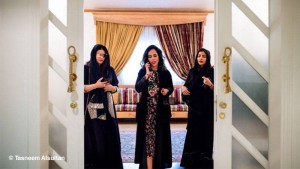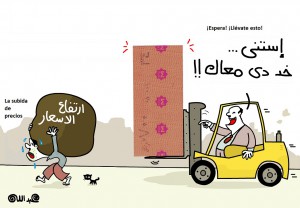Saudi Arabia may be at the early stages of developing a solar power market, yet all the signs are pointing to a remarkable determination by the government to diversify the country’s energy mix.
A strong political will has been long cited as the main driver of any structural change in the economy, and even more so when it comes to establishing a solar power sector. Out of this will, market incentives and job opportunities are born, and eventually, an entire ecosystem takes shape.
Saudi Arabia may be at the beginning of this chain when it comes to solar energy, as it works on establishing the necessary regulatory infrastructure and commercial framework. Yet all the signs are already pointing to a remarkable determination by the government to diversify the national energy mix.
SEC employs CSP
For example, the kingdom’s first power plant using CSP, Dhuba 1 Independent Power Project (IPP), has been initiated by Saudi Electricity Company (SEC), the national, listed electric utility in which the government is a major stakeholder.
Dhuba 1 is a 550 MW gas-fired Integrated Solar Combined-Cycle (ISCC) plant that will incorporate a 50 MW CSP portion, according to Fouad Alsherebi, executive vice president of Power Generation at SEC.
For this project, the utility firm has selected parabolic trough technology, and had invited expressions of interest on December 25, 2013. In the same week, SEC commissioned two major power projects at Qurayyat with a capacity of 7,900 MW, which included the 3,927 MW Al-Qurayyat IPP, the world’s largest independent power generation project.
“This IPP is another major achievement of SEC, which co-owns the project with a consortium, led by ACWA Power Co., toward privatization of this vital sector and opening doors of competition in power generation,” SEC’s outgoing CEO Ali Al-Barrak, said in a statement.
This year, SEC is reportedly planning to tender the 1,800 MW Dhuba 2 IPP, another ISCC project, with steam running on liquid fuel oil, and one that will be 50% owned by SEC. The procurement for each of Dhuba 1 and Dhuba 2 will be undertaken on a build-own-and-operate model, and they are projected to be in operation by 2017 and 2018 respectively.
“Eleven thousand megawatt IPP generation capacity is to be in service by 2018, so that shows a great opportunity for investors in the IPP,” highlights Alsherebi.
Privatizing utilities
SEC owns most of Saudi Arabia’s generation capacity, transmission and distribution infrastructures. However, it has long-term unbundling plans to deregulate the market, following a decision made in 2000 to reach an open energy market in stages – from a single buyer, to a principle buyer, to an open market.
So far, SEC has tendered five plants using the IPP model, which requires the utility to enter into a take-or-pay agreement with the developer, and Dhuba 1 will be the sixth. Although the programme has progressed rapidly, SEC’s target is to limit the IPP model to 30% of the kingdom’s total generation.
“We only want to have IPP plants producing enough electricity in order to cover the base load of demand. Anything more that is produced may put us into the position of potentially being forced to pay for the unused electricity,” Al-Barrak said in an interview with Oil & Gas Year.
“It is wiser to have the remaining 70% of the kingdom’s total generation be owned by the SEC, which means it can manage production based on demand”.
Al-Barrak, who served as the CEO of SEC since October 2006, recently resigned, and the new CEO, Ziad Al-Shiha, is the former executive director for power systems at Saudi Aramco.
Interestingly, Al-Shiha is known for promoting cogeneration plants that operate simultaneously by generating electricity and useful heat. Among the various positions he has held was board member of the Center of Research Excellence in Renewable Energy, a Saudi renewable energy research center.
Localization expected
SEC has made it clear that the industrial localization of power systems will be of major importance, as Alsherebi explained at the recent US-Saudi Business Opportunities Forum.
“We want to localize manufacturing transmission equipment, power generation equipment, and distribution – of course most of the distribution equipment today are manufactured in Saudi Arabia. They even export outside of Saudi Arabia”.
The need is more felt in the generation and transmission area, he said, because not much work has been done there. Fuel factories are already in the process of building their capacity in the area of high voltage gas insulated switchgear, transformers, and gas turbines.
“Siemens Company has started building a facility in Saudi Arabia to manufacture gas turbines. So we expect others also to do the same”.
“We as a client, as a utility, we prefer to have local manufacture facilities in Saudi Arabia so that everything will be close to our facilities. (This leads to a) well-established pre-qualification process and enhancement of supplier-client relationship. And if anybody goes into the site of SEC, they will find all the information required about that”, notes Alsherebi.
The benefits of industrial localization, as he points out, include shorter delivery time, standardized design adapted to local environmental requirements, and the employment of the young Saudi generation.
Oil giant takes on solar
Meanwhile, Saudi Arabian Oil Company (Saudi Aramco), a national oil and gas company that manages the world’s largest proven oil reserves, has also shown considerable interest in solar energy.
Starting with a 10.5 MW solar PV carport system at one of its buildings, it then commissioned a 3.5 MW polysilicon solar system for the King Abdullah Petroleum Studies and Research Center, which was later increased to 5 MW, and last summer, it initiated a 1 MW pilot CPV plant in Tabuk, an area known to have high DNI levels.
In 2012, Saudi Aramco set up the Solar Technology Park in Dhahran, a test field that accommodates 31 technologies provided by 26 vendors. These are being tested over different seasons to determine the highest yield possible in the kingdom’s climatic conditions and the impact of heat and dust accumulation.
“Our vision is to turn the kingdom into a global solar hub, and we are investing heavily in the research, development and utilization of solar energy,” says Khalid Al-Falih, president and CEO of Saudi Aramco.
According to Nour Shihabuddin, renewables engineer at Saudi Aramco, the company is now focusing on three areas: emerging technology assessments; project development – which includes resource mapping of wind, solar and geothermal potential – and market intelligence.
Based on Saudi Aramco’s backup data, 100 MW of CSP would require 2.25km² of land and an investment cost of US$ 4.5 per watt. It would yield 220 GWh/yr and offset the consumption of 431 barrels of oil.
Although CSP has not been specifically mentioned in Aramco’s renewable agenda, the company is actively involved with cogeneration power projects, having signed agreements last year to build and operate three cogeneration plants at its oil and gas complexes. Together, these plants will generate 900 MW of power and 1,500 tons of steam per hour when they come on-stream in 2016.
“This is one of the most important types of projects aimed at improving energy efficiency in the kingdom,” Ahmad Al-Khowaiter, executive director of New Business Development at Saudi Aramco, said at the time of signing the deals.
CSP to curb peak load
Improving energy efficiency is of central importance to Saudi Arabia, as the current utilization of energy has been deemed inefficient.
And while SEC is in charge of building combined cycle and co-generation power plants, which is expected to enhance efficiency on the supply side to a range of 50 to 80%, on the demand side, the Electricity & Cogeneration Regulatory Authority (ECRA) aims to reduce the peak load by 14% and energy consumption by 8%. This would bring savings of around 17.5 million barrels of oil per year.
To achieve these targets, the government set up the Saudi Energy Efficiency Center, which has a membership of all concerned ministries, and they are examining various ways of implementing efficiency.
“We have the solar energy is coming at the peak when we need it, and it can save not only energy but can also help us in curbing the peak load,” says H.E. Dr. Abdullah Al-Shehri, Governor of ECRA. Indeed, CSP with storage, which is required by K.A.CARE in the upcoming tenders, will be an optimal way of meeting both the daytime and evening peak demands of the kingdom.
With K.A.CARE’s target of having 25 GW of CSP capacity installed by 2032, and with more solar projects coming from SEC and Saudi Aramco, the global CSP market can look forward to a very active year in a rapidly expanding solar power market.
Source: CSP Today, 13/01/2014







Aún no hay comentarios, ¡añada su voz abajo!